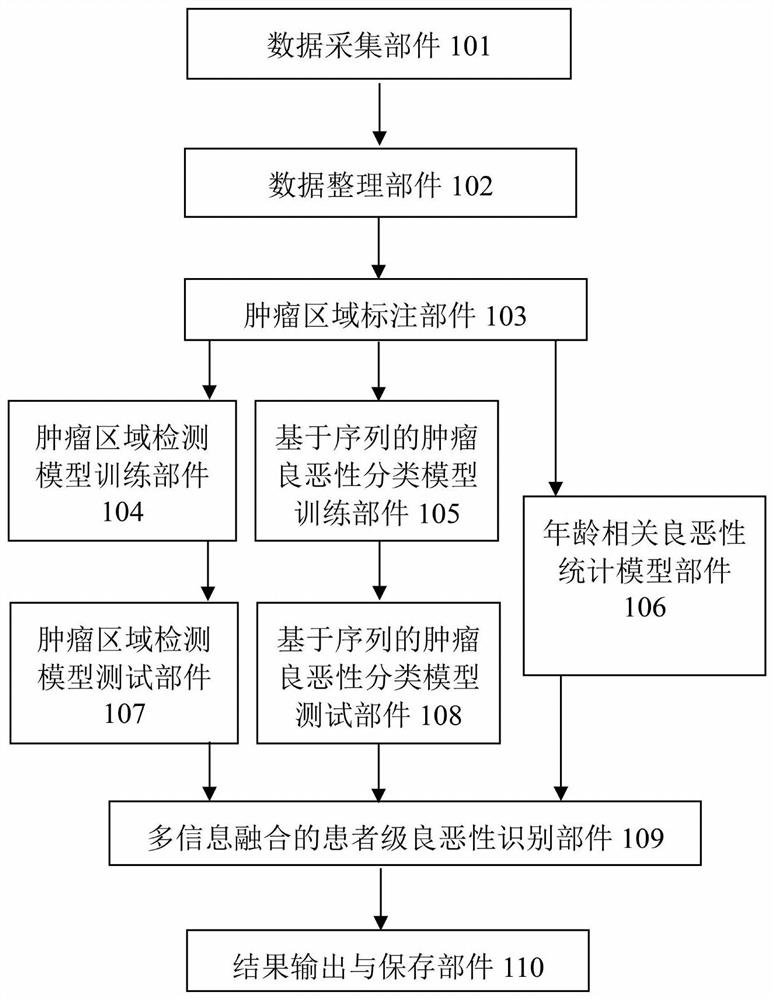Benign and malignant tumor identification method and system based on image data and deep learning
A technology of image data and deep learning, applied in the field of target detection and recognition in pictures, can solve the problem of low robustness in the classification of benign and malignant tumors, and achieve the effect of improving prognosis and accuracy
- Summary
- Abstract
- Description
- Claims
- Application Information
AI Technical Summary
Problems solved by technology
Method used
Image
Examples
Embodiment Construction
[0068] The present invention proposes a method and system for distinguishing benign and malignant tumors at the patient level based on deep learning and based on image data and clinical information. It mainly includes the following steps:
[0069] (1) First, use the tumor region detection model to detect the tumor region and roughly classify benign and malignant on all image frames of all image sequences of the same patient.
[0070] (2) For each sequence of the patient, based on the above tumor region detection results, a three-dimensional tumor region sequence is extracted, and a multi-frame sequence classification model is used for more refined benign and malignant classification.
[0071] (3) Considering the results of the detection model, the results of the multi-frame sequence classification model, and the age-related distribution of benign and malignant tumors, the final patient-level tumor benign and malignant identification results are obtained by using a multi-inform...
PUM
 Login to View More
Login to View More Abstract
Description
Claims
Application Information
 Login to View More
Login to View More - R&D
- Intellectual Property
- Life Sciences
- Materials
- Tech Scout
- Unparalleled Data Quality
- Higher Quality Content
- 60% Fewer Hallucinations
Browse by: Latest US Patents, China's latest patents, Technical Efficacy Thesaurus, Application Domain, Technology Topic, Popular Technical Reports.
© 2025 PatSnap. All rights reserved.Legal|Privacy policy|Modern Slavery Act Transparency Statement|Sitemap|About US| Contact US: help@patsnap.com



